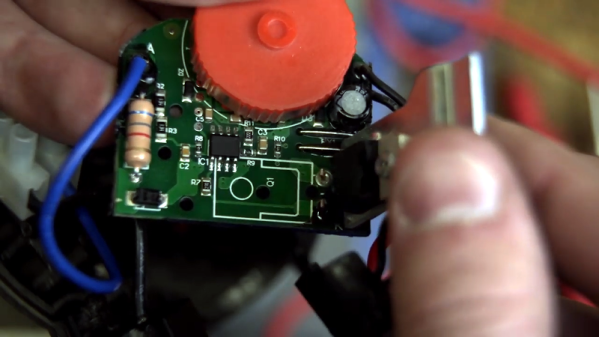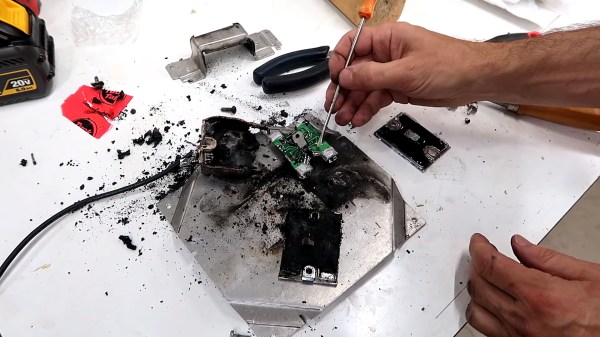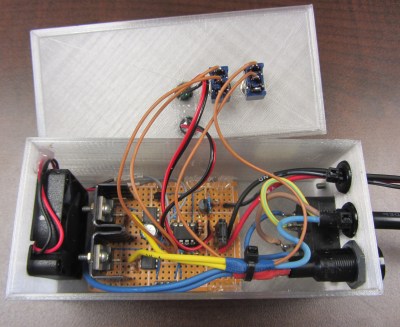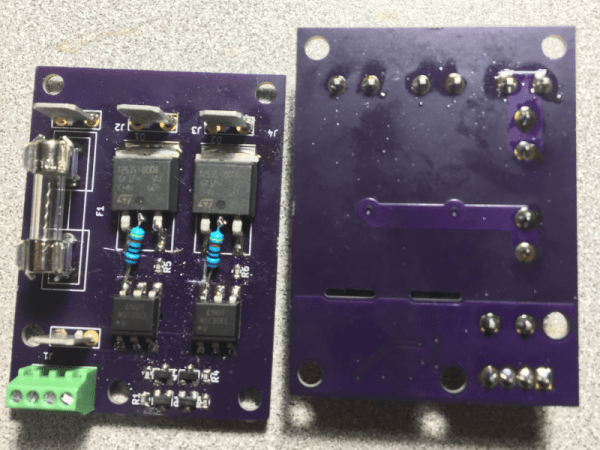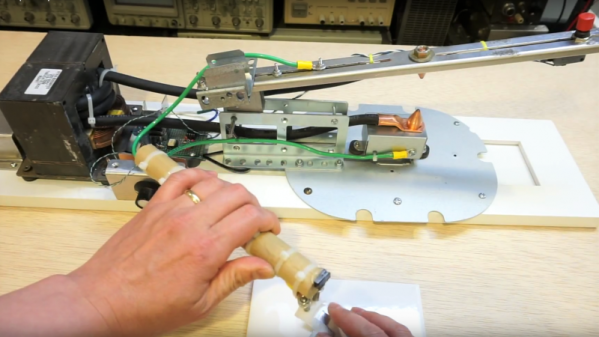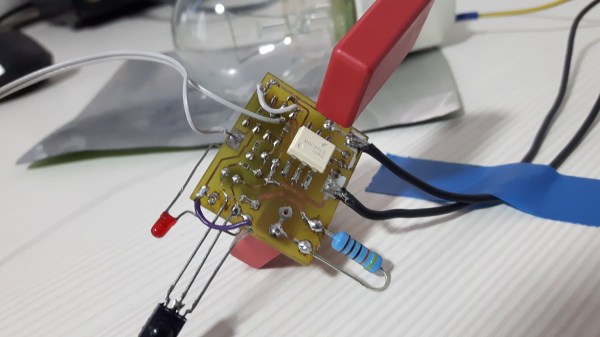A common theme in modern consumer electronics is having a power button that can be tapped to turn the device on, but needs to be held down when it’s time to shut it off. [R. Jayapal] had noticed a circuit design for this setup when using DC and decided to create a version that could handle AC-powered loads.
The circuit relies on a classic optoisolated triac to switch the AC line, although [R. Jayapal] notes that a relay would also work. The switch circuit consists of two transistors, a comparator, a flip flop and a monostable. As you might expect, the button triggers the flip flops to turn the triac on. However, if you hold the switch for more than a few seconds, a capacitor charges and causes the comparator to trip the output flip flop.
The DC circuit that inspired this one is naturally a bit simpler, although we might have been tempted to simply use the output of that circuit to drive a relay or triac. On the other hand, the circuit is set up to allow you to adjust the time delay easily.
Given the collection of parts, though, we wonder if you couldn’t press some 555s into service for this to further reduce the part count. If relays are too old-fashioned for you, you can always use a solid-state relay or make your own.


